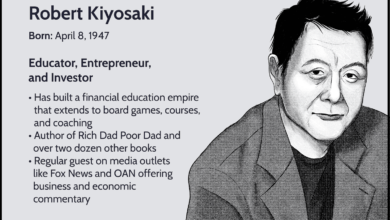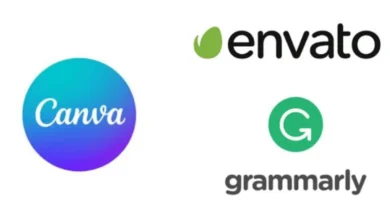Practical questions to ask client on first meeting: A Guide for Small Business Owners and Freelancers

Practical questions to ask client on first meeting: A Guide for Small Business Owners and Freelancers
Introduction: The Importance of the First Client Meeting
For small business owners and freelancers, the first client meeting is more than just an introductory session—it’s a crucial step toward building a productive and lasting partnership. This initial interaction sets the tone for your relationship, helps you understand the client’s needs, and lays the groundwork for a successful project. Asking the right questions can make all the difference in ensuring both parties are aligned and prepared for what lies ahead.
This comprehensive guide will explore the essential questions to ask during that first client meeting. We’ll cover everything from preparation to follow-up, providing you with the tools to make a great first impression and set the stage for a successful collaboration.
Section 1: Setting the Stage – Preparing for the First Meeting
Researching the Client’s Business and Industry
Before you even sit down for that first meeting, it’s essential to come prepared. Researching the client’s business and industry will help you ask more relevant questions and show the client that you are serious and invested in their success.
- Understand their business model: What products or services do they offer? Who are their primary customers?
- Industry trends: Are there any trends or challenges currently affecting their industry?
- Competitors: Who are their main competitors, and what differentiates your client from them?
Preparing a List of Questions to Ask Based on the Research
Once you’ve done your homework, prepare a list of tailored questions. This will ensure you cover all the necessary topics and demonstrate your expertise.
Some questions to consider:
- “Can you tell me more about your business and what makes it unique?”
- “What specific challenges are you currently facing in your industry?“
- “Who are your main competitors, and how do you differentiate yourself from them?”
Section 2: Building Rapport and Understanding Client Needs
Ice-Breakers to Establish a Connection
Starting the meeting with a few ice-breakers can help ease initial tension and build rapport. Simple questions about their day or recent events can go a long way:
- “How has your week been so far?”
- “Did you catch the latest industry news?”
Open-ended questions to Uncover Client Objectives and Pain Points
It is crucial to understand what the client aims to achieve and their challenges. Open-ended questions will encourage them to share more detailed information:
- “What are your primary goals for this project?“
- “What problems are you hoping to solve with our services?“
- “Can you describe any previous experiences you’ve had with similar projects?”
Section 3: Providing Solutions and Next Steps
Tailoring Your Services to Meet Client Needs
Now that you understand the client’s objectives and pain points, it’s time to discuss how your services can address these issues. Be specific and provide examples of past successes.
- “Based on what we’ve discussed, here’s how we can help…“
- “We’ve previously helped clients in similar situations by…”
Discussing Project Timelines, Budgets, and Expectations
Clear communication about timelines, budgets, and expectations is essential to avoid misunderstandings later. Be transparent and make sure all parties are on the same page:
- “What is your desired timeline for this project?“
- “Do you have a specific budget in mind?“
- “What are your expectations regarding communication and updates?”
Section 4: Following Up for Success
The Importance of Post-Meeting Follow-Ups
A successful first meeting doesn’t end when you walk out the door. Following up is vital to keep the momentum and show the client you are committed.
- Send a thank-you email summarizing the key points discussed.
- Provide any additional information or materials you promised during the meeting.
Maintaining Communication and Transparency
Continued communication and transparency will help build trust and ensure the project stays on track:
- Schedule regular check-ins or updates.
- Be upfront about any potential issues or changes in the project scope.
Conclusion: Recapping the Key Points and the Impact of a Successful First Meeting
The first client meeting is a critical step toward establishing a successful partnership. By preparing thoroughly, asking the right questions, and following up diligently, you can ensure both parties are aligned and ready to move forward.
Remember, the goal is to understand the client’s needs, demonstrate how your services can meet those needs, and build a foundation of trust and communication. With these strategies in place, you’ll be well on your way to developing robust and long-lasting client relationships.
Ready to make your next first client meeting a success? Share your thoughts or experiences in the comments below!
Practical questions to ask client on first meeting: A Guide for Small Business Owners and Freelancers
Introduction: The Importance of the First Client Meeting
For small business owners and freelancers, the first client meeting is more than just an introductory session—it’s a crucial step toward building a productive and lasting partnership. This initial interaction sets the tone for your relationship, helps you understand the client’s needs, and lays the groundwork for a successful project. Asking the right questions can make all the difference in ensuring both parties are aligned and prepared for what lies ahead.
This comprehensive guide will explore the essential questions to ask during that first client meeting. We’ll cover everything from preparation to follow-up, providing you with the tools to make a great first impression and set the stage for a successful collaboration.
Section 1: Setting the Stage – Preparing for the First Meeting
Researching the Client’s Business and Industry
Before you even sit down for that first meeting, it’s essential to come prepared. Researching the client’s business and industry will help you ask more relevant questions and show the client that you are serious and invested in their success.
- Understand their business model: What products or services do they offer? Who are their primary customers?
- Industry trends: Are there any trends or challenges currently affecting their industry?
- Competitors: Who are their main competitors, and what differentiates your client from them?
Preparing a List of Questions to Ask Based on the Research
Once you’ve done your homework, prepare a list of tailored questions. This will ensure you cover all the necessary topics and demonstrate your expertise.
Some questions to consider:
- “Can you tell me more about your business and what makes it unique?”
- “What specific challenges are you currently facing in your industry?“
- “Who are your main competitors, and how do you differentiate yourself from them?”
Section 2: Building Rapport and Understanding Client Needs
Ice-Breakers to Establish a Connection
Starting the meeting with a few ice-breakers can help ease initial tension and build rapport. Simple questions about their day or recent events can go a long way:
- “How has your week been so far?”
- “Did you catch the latest industry news?”
Open-ended questions to Uncover Client Objectives and Pain Points
It is crucial to understand what the client aims to achieve and their challenges. Open-ended questions will encourage them to share more detailed information:
- “What are your primary goals for this project?“
- “What problems are you hoping to solve with our services?“
- “Can you describe any previous experiences you’ve had with similar projects?”
Section 3: Providing Solutions and Next Steps
Tailoring Your Services to Meet Client Needs
Now that you understand the client’s objectives and pain points, it’s time to discuss how your services can address these issues. Be specific and provide examples of past successes.
- “Based on what we’ve discussed, here’s how we can help…“
- “We’ve previously helped clients in similar situations by…”
Discussing Project Timelines, Budgets, and Expectations
Clear communication about timelines, budgets, and expectations is essential to avoid misunderstandings later. Be transparent and make sure all parties are on the same page:
- “What is your desired timeline for this project?“
- “Do you have a specific budget in mind?“
- “What are your expectations regarding communication and updates?”
Section 4: Following Up for Success
The Importance of Post-Meeting Follow-Ups
A successful first meeting doesn’t end when you walk out the door. Following up is vital to keep the momentum and show the client you are committed.
- Send a thank-you email summarizing the key points discussed.
- Provide any additional information or materials you promised during the meeting.
Maintaining Communication and Transparency
Continued communication and transparency will help build trust and ensure the project stays on track:
- Schedule regular check-ins or updates.
- Be upfront about any potential issues or changes in the project scope.
Conclusion: Recapping the Key Points and the Impact of a Successful First Meeting
The first client meeting is a critical step toward establishing a successful partnership. By preparing thoroughly, asking the right questions, and following up diligently, you can ensure both parties are aligned and ready to move forward.
Remember, the goal is to understand the client’s needs, demonstrate how your services can meet those needs, and build a foundation of trust and communication. With these strategies in place, you’ll be well on your way to developing robust and long-lasting client relationships.
Ready to make your next first client meeting a success? Share your thoughts or experiences in the comments below!
Practical questions to ask client on first meeting: A Guide for Small Business Owners and Freelancers
Introduction: The Importance of the First Client Meeting
For small business owners and freelancers, the first client meeting is more than just an introductory session—it’s a crucial step toward building a productive and lasting partnership. This initial interaction sets the tone for your relationship, helps you understand the client’s needs, and lays the groundwork for a successful project. Asking the right questions can make all the difference in ensuring both parties are aligned and prepared for what lies ahead.
This comprehensive guide will explore the essential questions to ask during that first client meeting. We’ll cover everything from preparation to follow-up, providing you with the tools to make a great first impression and set the stage for a successful collaboration.
Section 1: Setting the Stage – Preparing for the First Meeting
Researching the Client’s Business and Industry
Before you even sit down for that first meeting, it’s essential to come prepared. Researching the client’s business and industry will help you ask more relevant questions and show the client that you are serious and invested in their success.
- Understand their business model: What products or services do they offer? Who are their primary customers?
- Industry trends: Are there any trends or challenges currently affecting their industry?
- Competitors: Who are their main competitors, and what differentiates your client from them?
Preparing a List of Questions to Ask Based on the Research
Once you’ve done your homework, prepare a list of tailored questions. This will ensure you cover all the necessary topics and demonstrate your expertise.
Some questions to consider:
- “Can you tell me more about your business and what makes it unique?”
- “What specific challenges are you currently facing in your industry?“
- “Who are your main competitors, and how do you differentiate yourself from them?”
Section 2: Building Rapport and Understanding Client Needs
Ice-Breakers to Establish a Connection
Starting the meeting with a few ice-breakers can help ease initial tension and build rapport. Simple questions about their day or recent events can go a long way:
- “How has your week been so far?”
- “Did you catch the latest industry news?”
Open-ended questions to Uncover Client Objectives and Pain Points
It is crucial to understand what the client aims to achieve and their challenges. Open-ended questions will encourage them to share more detailed information:
- “What are your primary goals for this project?“
- “What problems are you hoping to solve with our services?“
- “Can you describe any previous experiences you’ve had with similar projects?”
Section 3: Providing Solutions and Next Steps
Tailoring Your Services to Meet Client Needs
Now that you understand the client’s objectives and pain points, it’s time to discuss how your services can address these issues. Be specific and provide examples of past successes.
- “Based on what we’ve discussed, here’s how we can help…“
- “We’ve previously helped clients in similar situations by…”
Discussing Project Timelines, Budgets, and Expectations
Clear communication about timelines, budgets, and expectations is essential to avoid misunderstandings later. Be transparent and make sure all parties are on the same page:
- “What is your desired timeline for this project?“
- “Do you have a specific budget in mind?“
- “What are your expectations regarding communication and updates?”
Section 4: Following Up for Success
The Importance of Post-Meeting Follow-Ups
A successful first meeting doesn’t end when you walk out the door. Following up is vital to keep the momentum and show the client you are committed.
- Send a thank-you email summarizing the key points discussed.
- Provide any additional information or materials you promised during the meeting.
Maintaining Communication and Transparency
Continued communication and transparency will help build trust and ensure the project stays on track:
- Schedule regular check-ins or updates.
- Be upfront about any potential issues or changes in the project scope.
Conclusion: Recapping the Key Points and the Impact of a Successful First Meeting
The first client meeting is a critical step toward establishing a successful partnership. By preparing thoroughly, asking the right questions, and following up diligently, you can ensure both parties are aligned and ready to move forward.
Remember, the goal is to understand the client’s needs, demonstrate how your services can meet those needs, and build a foundation of trust and communication. With these strategies in place, you’ll be well on your way to developing robust and long-lasting client relationships.
Ready to make your next first client meeting a success? Share your thoughts or experiences in the comments below!
Practical questions to ask client on first meeting: A Guide for Small Business Owners and Freelancers
Introduction: The Importance of the First Client Meeting
For small business owners and freelancers, the first client meeting is more than just an introductory session—it’s a crucial step toward building a productive and lasting partnership. This initial interaction sets the tone for your relationship, helps you understand the client’s needs, and lays the groundwork for a successful project. Asking the right questions can make all the difference in ensuring both parties are aligned and prepared for what lies ahead.
This comprehensive guide will explore the essential questions to ask during that first client meeting. We’ll cover everything from preparation to follow-up, providing you with the tools to make a great first impression and set the stage for a successful collaboration.
Section 1: Setting the Stage – Preparing for the First Meeting
Researching the Client’s Business and Industry
Before you even sit down for that first meeting, it’s essential to come prepared. Researching the client’s business and industry will help you ask more relevant questions and show the client that you are serious and invested in their success.
- Understand their business model: What products or services do they offer? Who are their primary customers?
- Industry trends: Are there any trends or challenges currently affecting their industry?
- Competitors: Who are their main competitors, and what differentiates your client from them?
Preparing a List of Questions to Ask Based on the Research
Once you’ve done your homework, prepare a list of tailored questions. This will ensure you cover all the necessary topics and demonstrate your expertise.
Some questions to consider:
- “Can you tell me more about your business and what makes it unique?”
- “What specific challenges are you currently facing in your industry?“
- “Who are your main competitors, and how do you differentiate yourself from them?”
Section 2: Building Rapport and Understanding Client Needs
Ice-Breakers to Establish a Connection
Starting the meeting with a few ice-breakers can help ease initial tension and build rapport. Simple questions about their day or recent events can go a long way:
- “How has your week been so far?”
- “Did you catch the latest industry news?”
Open-ended questions to Uncover Client Objectives and Pain Points
It is crucial to understand what the client aims to achieve and their challenges. Open-ended questions will encourage them to share more detailed information:
- “What are your primary goals for this project?“
- “What problems are you hoping to solve with our services?“
- “Can you describe any previous experiences you’ve had with similar projects?”
Section 3: Providing Solutions and Next Steps
Tailoring Your Services to Meet Client Needs
Now that you understand the client’s objectives and pain points, it’s time to discuss how your services can address these issues. Be specific and provide examples of past successes.
- “Based on what we’ve discussed, here’s how we can help…“
- “We’ve previously helped clients in similar situations by…”
Discussing Project Timelines, Budgets, and Expectations
Clear communication about timelines, budgets, and expectations is essential to avoid misunderstandings later. Be transparent and make sure all parties are on the same page:
- “What is your desired timeline for this project?“
- “Do you have a specific budget in mind?“
- “What are your expectations regarding communication and updates?”
Section 4: Following Up for Success
The Importance of Post-Meeting Follow-Ups
A successful first meeting doesn’t end when you walk out the door. Following up is vital to keep the momentum and show the client you are committed.
- Send a thank-you email summarizing the key points discussed.
- Provide any additional information or materials you promised during the meeting.
Maintaining Communication and Transparency
Continued communication and transparency will help build trust and ensure the project stays on track:
- Schedule regular check-ins or updates.
- Be upfront about any potential issues or changes in the project scope.
Conclusion: Recapping the Key Points and the Impact of a Successful First Meeting
The first client meeting is a critical step toward establishing a successful partnership. By preparing thoroughly, asking the right questions, and following up diligently, you can ensure both parties are aligned and ready to move forward.
Remember, the goal is to understand the client’s needs, demonstrate how your services can meet those needs, and build a foundation of trust and communication. With these strategies in place, you’ll be well on your way to developing robust and long-lasting client relationships.




